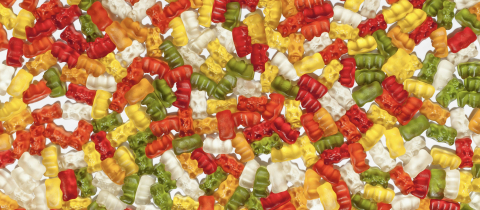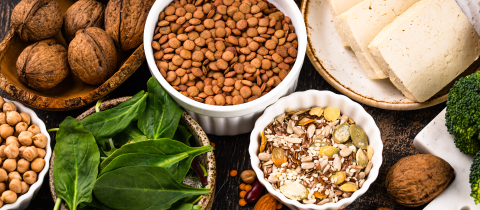Sir Percival Pott took an interest in the scrota of men. Particularly chimney sweeps. Pott was an eminent surgeon who in 1775 published a seminal paper that for the first time identified an environmental factor as a cancer-causing agent. He had observed an unusually high incidence of scrotal cancer in chimney sweeps and noted that soot was commonly embedded in the lesions. This led Dr. Pott to conclude that exposure to soot was a risk factor for cancer. He was correct! Soot contains a number of chemicals that have been identified as carcinogens.
A carcinogen is a substance that under some condition has the ability to cause cancer. Some cancers are genetic, but the vast majority occur when something goes awry in the normal process of cell division, usually due to damage to DNA caused by exposure to some form of radiation or to certain chemicals. But the devil is in the details. Not all chimney sweeps developed cancer. Extent and type of exposure matters! Sunlight can cause skin cancer, but there is a big difference between going for a lunchtime walk in Montreal in the winter and lying on the beach in the noon day sun in the Australian summer. Furthermore, not everyone who grills themselves in the sun gets skin cancer. And not everyone who smokes gets lung cancer and not everyone exposed to benzene develops leukemia. Why is that?
The body has defense mechanisms by which DNA damage can be repaired. But there is a limit to the amount of repair, in other words, there is a threshold effect for carcinogens below which exposure causes no harm. But that threshold is not the same for everyone because repair mechanisms are individualized, determined by genetics, physical fitness and intake of dietary components, mostly those found in fruits and vegetables. This is why discussions of carcinogenicity are always peppered with terms like “maybe,” “possibly” and “probably.”
Various organizations classify carcinogens into different categories, with the most widely referenced one being the International Agency for Research on Cancer (IARC). Its “Group 1” includes substances that are definitely known to cause cancer based on human epidemiological evidence. These include familiar substances like tobacco products, wood dust, diesel exhaust, salted fish, asbestos, benzene, formaldehyde, dioxin and ultraviolet light. But aflatoxins from molds, the cancer drug tamoxifen, infection by helicobacter pylori bacteria, herbal remedies containing Aristolochia species, x-rays, alcoholic beverages and occupation as a painter, cabinet maker or chimney sweep are also on the list. Of course, exposure still matters. The vast majority of people can consume alcohol without it triggering cancer.
“Group 2A” lists “probable carcinogens” as determined by strong evidence from animal studies but limited evidence from human studies. Lead compounds, acrylamide in baked goods, emissions from frying foods, hairdressing as an occupation, shift work, and insecticides such as diazinon and malathion are in this category. Then we have substances and processes in “Group 2B” that are classified as “possibly carcinogenic to humans” based on limited animal or human evidence. Coffee, pickled vegetables, radiofrequency electromagnetic fields, titanium dioxide, safrole in sassafras, DDT, carbon black and chloroform are all found on this list, along with occupational exposure through carpentry, firefighting and textile manufacture. Combining all three groups, there are more than 450 substances or processes that are classified as known, probable or possible carcinogens.
Public concern reached new heights in 2015 when IARC listed glyphosate, the widely used herbicide as a “probable human carcinogen.” But just a few months later, the European Food Safety Authority (EFSA) concluded that it was very unlikely that this chemical causes cancer. How can two groups of experts come to such different conclusions? Which one is right? Actually both are. IARC’s evaluation is based on hazard, EFSA’s on risk. If a substance can cause cancer in some animal in some situation, no matter how extreme, IARC labels it a “carcinogen.” But a risk analysis, as performed by EFSA, as well as Health Canada, evaluates the likelihood of contracting cancer under realistic exposures. This is the evaluation that is relevant for the public at large. EFSA concluded that there is no risk at a daily exposure of 0.5 mg of glyphosate per kg of body weight which for an 80 kg person would be equivalent to the residues found on 400 kg of fruits or vegetables!
The glyphosate issue was relegated to the back burner when IARC created panic by declaring that processed meats would be placed in Group 1. After poring through some 800 peer-reviewed publications, IARC estimates that eating 50 grams of processed meat every day over a lifetime increases risk by about 18%. In other words, if a hundred people follow such a regimen over a lifetime, there will be seven cases of colorectal cancer instead of six. So for an individual, the chance of getting colon cancer because of eating processed meats is about 1 in 100. That is a very small risk, but because there may well be millions of people following such a diet, the impact on the population can be significant, in IARC’s estimate, about 34,000 cases a year.
What do we do with all this information? There is no way to avoid all the known and suspect carcinogens but we can limit alcohol, sun exposure and avoid smoking, gorging on processed meats and eating burned food. Fruits and vegetables may help boost repair mechanisms. And if you are offered a job as a chimney sweep, don’t take it.







